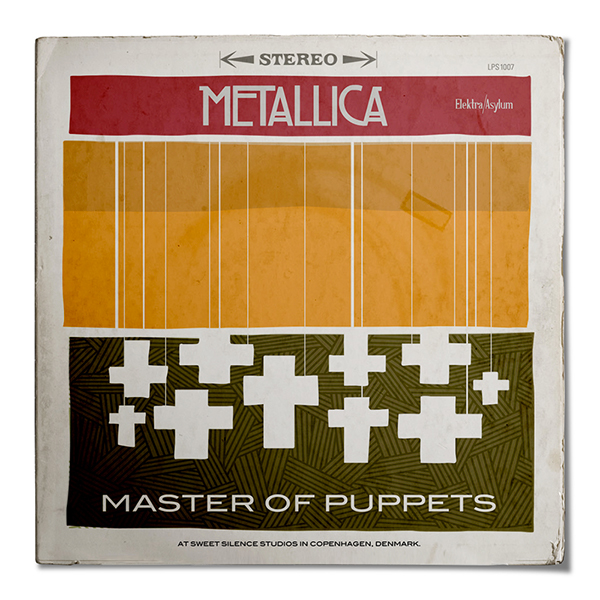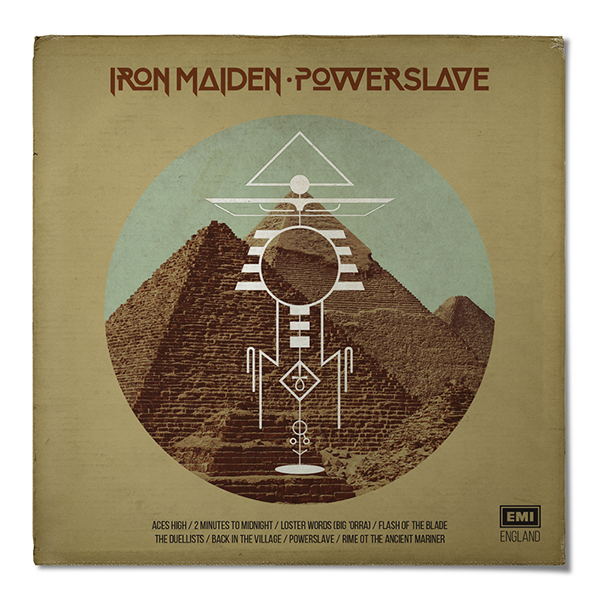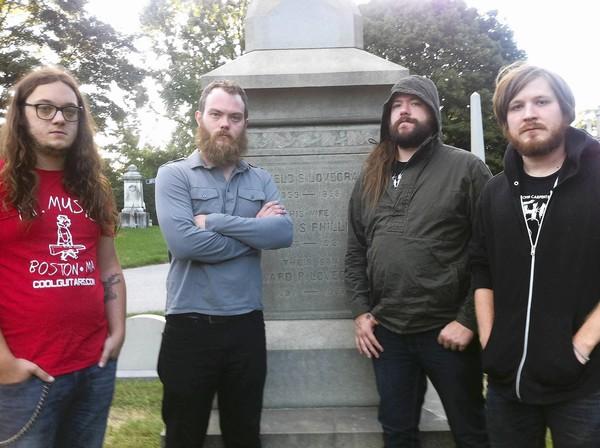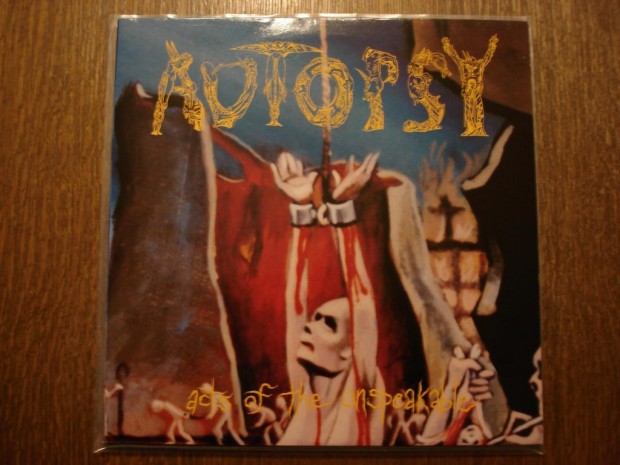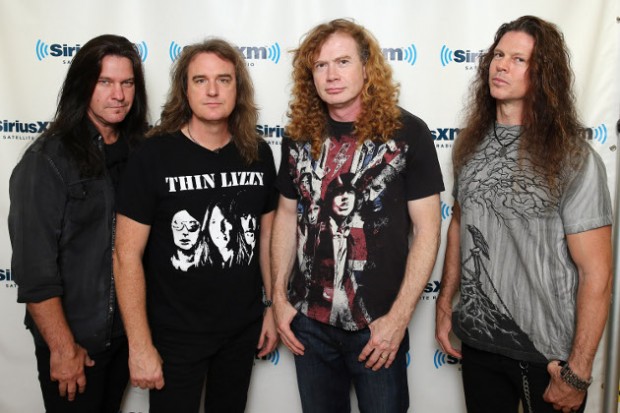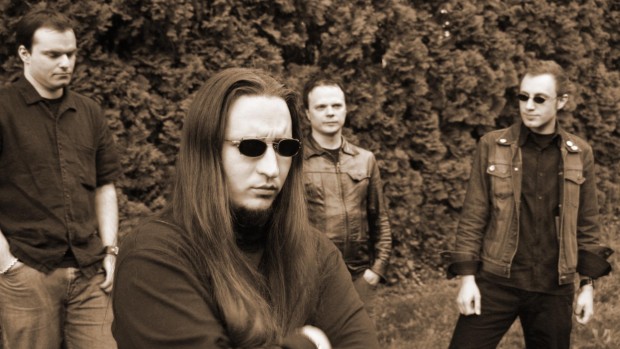Zabavan je tekst, ali, iskreno, mislim da preteruje. Sećam se dobro kad su izašla oba albuma, jer sam i ja u to vreme bio u potrazi za sličnim bendovima i evo šta na tu temu mogu da izjavim: Amorfisov album je bio zabavan, melodičan i sladak, i jeste bio relativno svež, šteta što od tog benda nije izraslo nešto bolje. Pa ipak, kao što i sam autor primećuje, Skyclad beat them to it - it being kombinacija teškog (istina ne death, nego thrash) metala i folk melodija. Ipak, okej, to je kao što rekaoh sladak album koji me čak naveo da kupim i njihov prvenac Karelian Isthmus (i da u rečniku pogledam reč "isthmus"), koji je ortodoksniji death metal, ali uopšte nije loš, naprotiv.
Sećam se i da sam kupio Tiamaov Wildhoney, i toliko me je smorio, da sam ubrzo ugrabio priliku da ga zamenim za neki drugi album (ali da me ubiješ, sećam se koji) - tipičan slučaj metalaca koji se prave pametnij nego što jesu. Razvučen, dosadan (iako kratak) album, sa puno nekih kao flojdovskih momenata. Smor.
U to vreme sam inače već uveliko slušao Type O Negative, Paradise Lost, Cathedral, My Dying Bride, a nanjušio sam i Skyclad, mada je do njih u to vreme bilo malo teže doći - što su sve bili bendovi koji su uveliko eksperimentisali sa metalom i već izlazili iz svojih podžanrovskih niša. Već su uveliko bili izašli ToN-ov "Bloody Kisses" i "SLow, Deep and Hard", PL-ov "Icon" i "Shades of God", Cathedral-ov "Ethereal Mirror" i "Static Majik", kao My Dying Bride-ov "Turn Loose the Swans". Amorfisov i Tijamatov album jesu bili ovog deo trenda, ali nisu bili ni prvi, ni najbolji, ni najorginalniji, a slutim ni najutiacniji.
Svejedno, zabavan tekst.
When Death Metal Got Weird
By
invisibleoranges
Published: October 3, 2014Tags: amorphis, anniversaries, death metal, dlawrence, features, finland, folk metal, sweden, tiamat…Although we’re a little late getting around to it, September 1st marked the twin anniversary of two of the most groundbreaking metal albums of the 1990s: Amorphis’s Tales from the Thousand Lakes and Tiamat’s Wildhoney. Each on its own is laudable for the forward stride it represented for the band that crafted it, but taken together, the two albums function as a crucial pivot point for an entire cohort of European metal bands.…Of course, Wildhoney and Tales from the Thousand Lakes are not all that similar. This is hardly shocking, since different bands take different trajectories, but just a few years prior, Tiamat and Amorphis were swimming in much closer waters. Amorphis was a latecomer to the death metal game, at least as far as the hyper-compressed chronology of the genre’s fitful birth and rapid proliferation in the late 1980s is concerned. Perhaps as a result of that lateness, however, Amorphis’s debut album The Karelian Isthmus is a remarkably powerful, confident statement, and one that already displays more hints at the band’s impending progression than does Tiamat’s relatively underformed 1990 debut Sumerian Cry.
Nevertheless, by the time 1994 rolled around, Tiamat already had three full-length albums of increasingly expansive death metal to their name, compared to Amorphis’s one. In a nutshell, then, the difference between Tiamat and Amorphis in 1994 is that with Wildhoney, it was as if Tiamat said, “We can do this,” while with Tales from the Thousand Lakes, Amorphis said, “Can we do this?” That makes Tiamat’s album the more confident of the two, while Amorphis’s is the bolder.……Tales from the Thousand Lakes is an unimpeachable classic, but it still needs to be said: it’s a bit rough. For every melodic folk riff that oozes class and sorrow, there’s a transition that isn’t telegraphed, and for every bold gesture that merges the burgeoning sound of melodic death metal with the hues of progressive rock, there’s a somewhat jarring juxtaposition of still distant stylistic features – the sometimes new-age synths butting crudely against stately death-growls. Though recorded in Tomas Skogsberg’s Sunlight Studios, Tales is miles away from the buzzsaw crunch that put the studio on the map; as a result, the album feels like the personnel involved are still feeling their way through unfamiliar terrain.
None of this is actual criticism, though: In some ways, this album wouldn’t feel like the timeless landmark it is if it weren’t for the nascency of its best ideas. Amorphis had taken colossal strides between The Karelian Isthmus and Tales, but they were still woodshedding some of it. Even though they have never bettered Tales, the story of Amorphis from ‘94 onward is one of continuous refinement of that initial leap forward. Outside of what it meant for the band, Tales was massively influential both in its wholehearted embrace of a single culture’s mythology (here, the Finnish Kalevala), and for playing folk metal nearly before folk metal was actually a thing (don’t worry; I see you there, Skyclad…).
The best moments of Tales from the Thousand Lakes are where Amorphis spools an outrageously catchy folk melody into a searing guitar lead, and then wraps the whole thing in a gruff death metal counterpoint that buttresses the mournful themes. “The Castaway” achieves a laser focus with that freewheeling folk lead that guides the band through a proggy quiver-full of shifting sections, while the impossibly classic “Black Winter Day” transmutes its sorrowful lead work into unstoppable momentum. By the time the triumphant concluding cadences of “Magic and Mayhem” ring out, with their echoes of Metallica’s finest instrumental suites, any sense of the roughness of Tales’s execution is erased by the awe at its sheer inventiveness.……For Tiamat’s part, Wildhoney also remains every bit the immersive, hypnagogic listening experience. Part of this is a result of the band’s willingness to take their songs in any direction necessary to fit the hallucinatory, ambient mood, but a large part is due to the massively detailed studio wizardry of the production. (On that count, massive credit is due to Waldemar Sorychta, who not only produced the album, but also played keyboards.) If you want to get fussy about it, Wildhoney is pretty difficult to classify as a metal album at all, but its sprawl and borderline arrogant ambition makes it continually thrilling. Pulling in a softened death metal gruffness and a patient, doom-hued stride, it cycles through gothic melodrama, Floydian psych, and capacious electronic flourishes, often all in the same song.
More so than any individual moment, however, what characterizes Wildhoney’s magic is how seamlessly it flows. The transition from “Whatever That Hurts” (which is basically about getting twelve kinds of wrecked on absinthe) into “The Ar,” for example, is an endlessly satisfying move. For a student of metal history, the entire album is littered with gestures that have been picked up and imitated (whether consciously or not): note how the goth-trad crunch and choral backing vocals of aforementioned “The Ar” provide an early skeleton for much of Cradle of Filth’s post-Cruelty & the Beast material, or how Johan Edlund’s impassioned vocal performance on “Visionaire” might have influenced Joe Duplantier of Gojira. If you listen closely, “Gaia” could have helped lay the foundation for funeral doom’s austere template. Best of all might be “Do You Dream of Me?” which is still brittle and eerie after all these years, like David Lynch scoring a wedding dance for skeletons. At every turn, Wildhoney is the sound of a band looking at the tools on hand and saying, “These can be bent to new purpose.”……Beyond what these albums meant for each band, their lasting impact is that they served notice of a collective turning away, or perhaps a new way of pursuing the old animisms. That they came out in 1994 is doubly interesting in the broader context of heavy metal, given that American metal in the same year was roiled by some of the watershed opening salvos of nu and groove metal – Korn’s self-titled debut, Machine Head’s Burn My Eyes, Prong’s Cleansing and to a lesser extent, Helmet’s Betty and Pantera’s Far Beyond Driven. Although Amorphis and Tiamat cannot be said to have had as large an influence on the development of mainstream-facing versions of heavy metal and hard rock as that American class of ‘94, to the extent that the groove and nu-metal eruptions of the early-to-mid-90s flashed white-hot but burned out relatively quickly, the impact of the European class has smoldered longer and dug deeper.
As evidence, just think about the career trajectory of any of these bands: Samael, Therion, The Gathering, Sentenced, Anathema, In the Woods, Rotting Christ, Paradise Lost, 3rd and the Mortal, Moonspell, Ulver, Katatonia, and on and on. Almost without fail, these artists traded in their early brutality for contemplative moderation, gothic melodrama, and an increasingly genre-agnostic pursuit of experimentation.
A cynic might argue that this collective migration to gentler (or at least more exploratory) sounds represents the natural process of a scene’s maturation rather than the outsize influence of either of these two records. Is it plausible that, if Tiamat and Amorphis hadn’t made these albums, some of their peers would have? Of course. The fact that nearly an entire cohort of European death metal bands began to turn away from their rude, primordial birth pangs around the time that these two albums were released is hardly proof that these two albums caused that shift.
So yes, perhaps this was just an inevitable evolutionary step in the development of the genre; still, primacy matters. Your first, most pined-after crush is always the strongest. Beyond that, though, one can trace more direct results: It’s hard to imagine how you get to The Gathering’s masterpiece How to Measure a Planet? or Ulver’s Themes from William Blake’s The Marriage of Heaven and Hell without passing through Wildhoney. Likewise, it’s hard to imagine getting to the late ’90s explosion of folk metal – with the following acts all from Finland alone: Turisas, Ensiferum, Finntroll, Moonsorrow, Korpiklaani – without the spectral visitation of Tales from the Thousand Lakes.…Influence is a diffuse, nebulous thing, but the echoing lament and spacious plaint of these two albums have sounded uncommonly clearly throughout the intervening decades. In the clutter of today’s musical climate, the word “classic” has apparently been revised to mean “thing that may have been pretty okay but with which we can crassly stoke your nostalgia fires.” So don’t call these classics, then; call them old friends, and invite them in again – as if for the first time – to tell their stories.—Dan Lawrence



 Erős Pista
Erős Pista
 by Erős Pista Wed Dec 10, 2014 11:41 am
by Erős Pista Wed Dec 10, 2014 11:41 am























